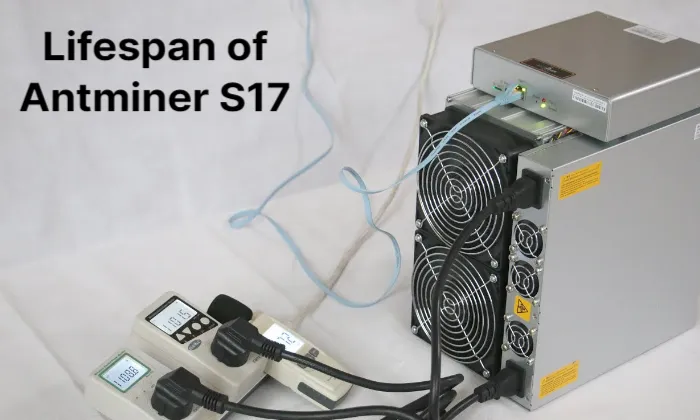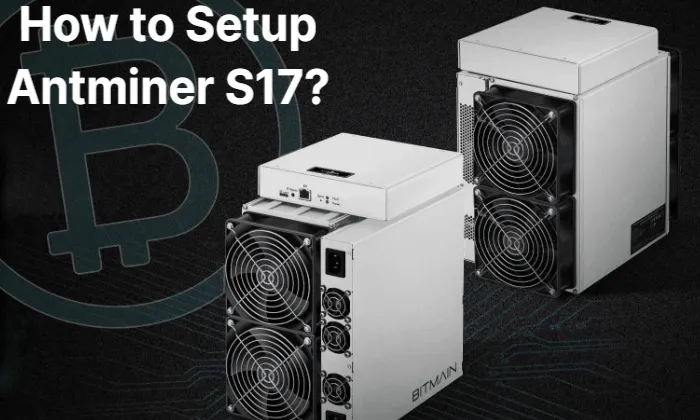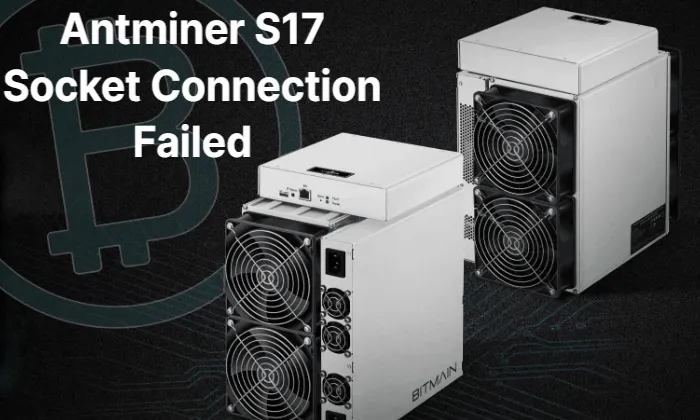We’ll talk about making the Antminer S17 series last the sweltering summer safely in this post.
The ASIC miners outperform GPU miners in terms of hashrate, so why is that? Because the former uses professional ASIC chips, which produce heat during large calculations. For miners, that is the only source of a high temperature.
Consider the Antminer S17 as an illustration. The air inlet temperature is roughly 32 if the indoor temperature is 29 °C and the cooling fans are operating automatically.℃ and the air outlet temperature is about 44.9℃. The chassis temperature is about 36°C, and the chip temperature on the mining status page is approximately 63°C.
In the summer, the temperature in most places will be more than 35℃ or even 40℃, which is very “fatal” for miners because they’re also generating heat. The chip will be damaged by the high temperature, which will lower the hashrate and shorten the useful life of the miners. Therefore, conducting efficient cooling in the summer is crucial.
Table of Contents
Antminer S17 Normal Operating Temperature Range
Temperature safety mechanisms on Antminers S17 can malfunction during cold or hot spells.
Also read: Guidance on the Onshelf and Maintenance of Bitmain Antminer S17 Series in Low-Temperature Areas
While it is possible to operate equipment between 0 and 40 C (32 and 104 F), most miners prefer to work above 5 C (41 and 41 F). Bitmain suggests keeping the Antminer S17’s operating temperature between 15 and 35C (59 and 95F).
A machine automatically enters “protection mode” and turns off the corresponding hashboards whose sensors report low temperatures if it draws air into its fans below -5C (23F). It also applies to temperatures that are too high. Hashboard shutdowns are also triggered by sensors readings above about 85C (185F).
What Happens When Antminer S17 Series Miner Overheats?

It comes as no surprise that miners frequently come up with inventive ways to prevent their equipment from overheating.
Some of the Reasons to Avoid Overheating in the Antminer S17 Series Miner Include:
Decrease in Hash Rate
We must first define the hash rate before moving on. Hash rate is a measure of how quickly a cryptocurrency miner’s computer can carry out complex calculations.
Given that productivity is frequently affected, this is unquestionably the most crucial factor to consider when choosing mining equipment.
The hash rate is essentially decreased when a machine overheats by attempting to reduce workload. As long as the miner is not cool, the hash rate will be below average.
Lower Power Efficiency
It is common knowledge that energy is used extensively during bitcoin mining. Even though Antminer S17 series miners consume a lot of electricity, when a machine overheats, the situation gets worse. More electricity is used while fewer results are produced as a result of the overheating-induced lower hash rate. Together, the two things result in decreased output and income.
Cost Efficiency
This is connected to the earlier concepts. The majority of mining expenses are related to electricity usage and maintenance. Miners frequently overheat, increasing their maintenance and electricity costs by two times. Antminer S17 series miners are consequently frequently less profitable.
Maintenance and Lifespan
The sporadic shutdown of miners that overheating causes is a serious drawback. If a piece of mining equipment overheats, it won’t just stop working; it will also break down more frequently. Finally, a miner from the Antminer S17 series will have a significantly shorter lifespan if it overheats frequently. A miner from the Antminer S17 series, for example, can degrade in a matter of months if exposed to high temperatures, despite having a three to five-year lifespan.
Overall Reduction in Efficiency
This conclusion is reached because equipment overheating can affect power usage, cost, and even equipment lifespan. The Antminer S17 series miner performs less productively than expected when these factors are taken into account. As a result, overheating directly contributes to equipment failure, increased energy usage, and decreased profitability.
It’s awful to get too hot. Antminer S17 series users’ productivity and financial viability are both affected. How can we then prevent overheating? What tactics are available to us?
How to Cool the Antmiern S17 in a Scientific Way?
When we previously visited the Antminer technicians, they offered some recommendations for cooling strategies. Let’s have a review first:
- Since it is impossible to guarantee the quality of other brands, Antminer must use the original brand of cooling fans.
- Low-speed fans can replace high-speed ones, but high-speed fans cannot replace low-speed ones.
- It’s crucial to regularly remove dust. Don’t disassemble the miner. Every month, blow the dust backwards using a high-pressure blower.
- Keep a constant eye on the miner’s temperature. Stop if there are any issues. There should be no more than a 10°C difference in the hashboard’s temperature.
- The Antminer should not be disposed of in oil for heat dissipation.
- In-room temperatures between 20 and 30 °C are ideal for mining.
- Since dust buildup may cause overheating, the chip temperature should be kept between 70 and 80 degrees Celsius.
- Regarding the problem of low chip temperature, if the miner is operating normally, the fan will run at a low speed and use less power.
So how can heat dissipation be studied scientifically? Consider the process of heat transfer.
The heat transfer can be concluded as the following three ways: heat conduction, heat convection and heat radiation.
- Heat conduction refers to the temperature difference inside the object or the direct contact of two different objects without relative motion. The internal particles’ thermal motion is the only mechanism used to transfer heat. For instance, when holding ice cubes, people frequently experience cold.
- Heat convection refers to the process of heat transfer caused by relative displacement of different parts of the fluid (gas, liquid or some solid such as powder). Take the example of making warm water by adding cold water to boiling water.
- Heat radiation refers to a process during which the objects without touching each other transfer energy through electromagnetic waves. Energy of electromagnetic waves (typically in the form of infrared rays) is created from an object’s internal energy. for instance, the sun’s heat.
Therefore, there are three quick cooling methods as follows:
Ⅰ. Direct Contact With the Objects of Lower Temperature
The systems for oil and water cooling are currently being tested. By directly contacting the miner with coolant, it is possible to create a cooling effect. The fans produce no noise other than what is necessary to lower the temperature. Although it is not currently in widespread use or has not gained much popularity, as technology advances, cooling fans will most likely be replaced using this method.
Ⅱ. Put Miner in the Place of Good Ventilation and Low Ambient Temperature
As already mentioned, it’s crucial to ensure proper ventilation and dust prevention. To reduce dust and prevent air return, modern mining farms will have window louvers and screens installed. Additionally, industrial negative pressure fans with excellent heat dissipation capabilities will be installed in many large mining farms.
Typically, cooler climates can be found near rivers and mountains. The temperature drops as altitude rises. Additionally, the climate is generally cooler and more conducive to mining in locations with high latitudes throughout the year.
Ⅲ. Reduce Heat from the Sources
Closing the miners down is impossible, but cleaning is crucial. Overheating can be successfully avoided with routine dusting. A high-pressure gun can be used in the specific methods to repeatedly blow air from the air outlet to the inlet.
Cooling Methods Prohibited by Engineers
If the noise of the miner is only annoying the neighbors, the effects of high temperatures will have a more severe impact, shortening the service lives of the miners and harming their physical and mental well-being.
As a result, many miners have developed a variety of cooling techniques.
Worker A: Put the miners in a room with a cooling system that operates around-the-clock.
Response from Engineer: Some miners opt to engage in small-scale (less than ten miners) mining in non-professional mining farms like their homes, garages, and lofts. The air conditioner can provide adequate cooling if there are only a few miners present. However, the cooling effect of the air conditioning won’t be as effective if there are a lot of miners. Secondly, even a standard home air conditioner uses about 1.3 kWh per hour, or 31.2 kWh per day, compared to the Antminer S17’s 35 kWh daily consumption. Therefore, from a financial standpoint, it is unprofitable.
Worker B: If it’s possible, open every window, door, and ceiling.
Response from Engineer: Although encouraging ventilation is a good idea, dust proofing should be given top priority. The performance of the miners will be impacted if the miners are in an open environment with cooling fans blowing wind into the chassis, which can cause some dust, insects, and other debris to enter and damage precision parts like the hashboard. If the dust is not removed promptly, the operating temperature will continue to rise and eventually harm the miners.
Worker C: I want to install two faster fans for my miner.
Response from Engineer: The installation of high-speed fans can theoretically replace low-speed fans, so why do Antminer cooling fans come in a variety of models and speeds? This is due to the fact that engineers have tested Antminer’s configuration numerous times, and each component will be taken into account to achieve the best operation as a whole. The overall performance of the miner will be impacted if high-speed fans are arbitrarily installed in place of the original fans, increasing power consumption and noise levels.
Creative Cooling Methods by Antminer S17 Users
Additionally, the Antminer S17 users have developed a variety of inventive cooling techniques, as shown below (Tip: Not verified; proceed with caution).
A: Dig eight 100-meter wells, each equipped with heat exchange bars, and spend 80,000 yuan to do so. Blow cool air into the enclosed space. It is sufficient to allow 300 miners to operate year-round at low temperatures. The main benefit is that there are no ongoing maintenance costs; only the electricity fees for the fans need to be paid. There is also hardly any dust. The indoor temperature can be kept at around 28°C even when the outside temperature is close to 40°C.
B: In order to achieve heat insulation and keep the miner’s temperature below 70°C, the air inlet will be cooled with a water curtain, and a negative pressure fan will be installed at the air outlet.
C: It is preferable to cool off using the wind because some seasoned miners typically reject water curtains.
- Heat insulation is undoubtedly necessary;
- Check the wind direction to enable cold wind to blow into the miner from the air inlet direction;
- In order to produce a certain amount of air compression when air enters, it is preferable to design the air inlet as a bell mouth, according to aerodynamics. Just Google “compress air to reduce temperature” for details. It’s the same principle as that in the refrigerator;
- At the air outlet, a negative pressure fan must be installed.
D: One ice cube can be purchased for 10 yuan and placed inside the mining farm. The lifespan of one ice cube is just one day.
E: In order to keep the miners at a safe distance, remove the frozen bottles of water from the refrigerator. Next, use a regular electric fan to blow cold air into the inlet to help with heat dissipation. Place a plate below to catch the dew on the bottles.
Summary: Keep Antminer S17 Cool
To safely and effectively cool your Antminer S17 down, there are three ways:
- Direct contact with the objects of lower temperature
- Put miner in the place of good ventilation and low ambient temperature
- Reduce heat from the sources
We also included a few original user suggestions; however, since they have not been verified, proceed with caution.
FAQs
What Temperature Should Antminer Run At?
The miner’s operating temperature range is 0 to 40 degrees Celsius when no other factors are present, but in practice, dust, humidity, and other factors may reduce this range., so it is recommended that the miner farm temperature be controlled between 15-35 °C. 25 °C is the best.
How Long Will An Antminer S17 Last?
around 3 to 5 years
The average lifespan of a well-kept, maintained machine can be around 3 to 5 years.
How Much Does An Bitmain Antminer S17 (56Th) Make?
Of course, if you calculate the net profit, you also need to deduct the cost of purchasing the mining machine.
If you choose to host the miner, you will also need to deduct the hosting fee.



